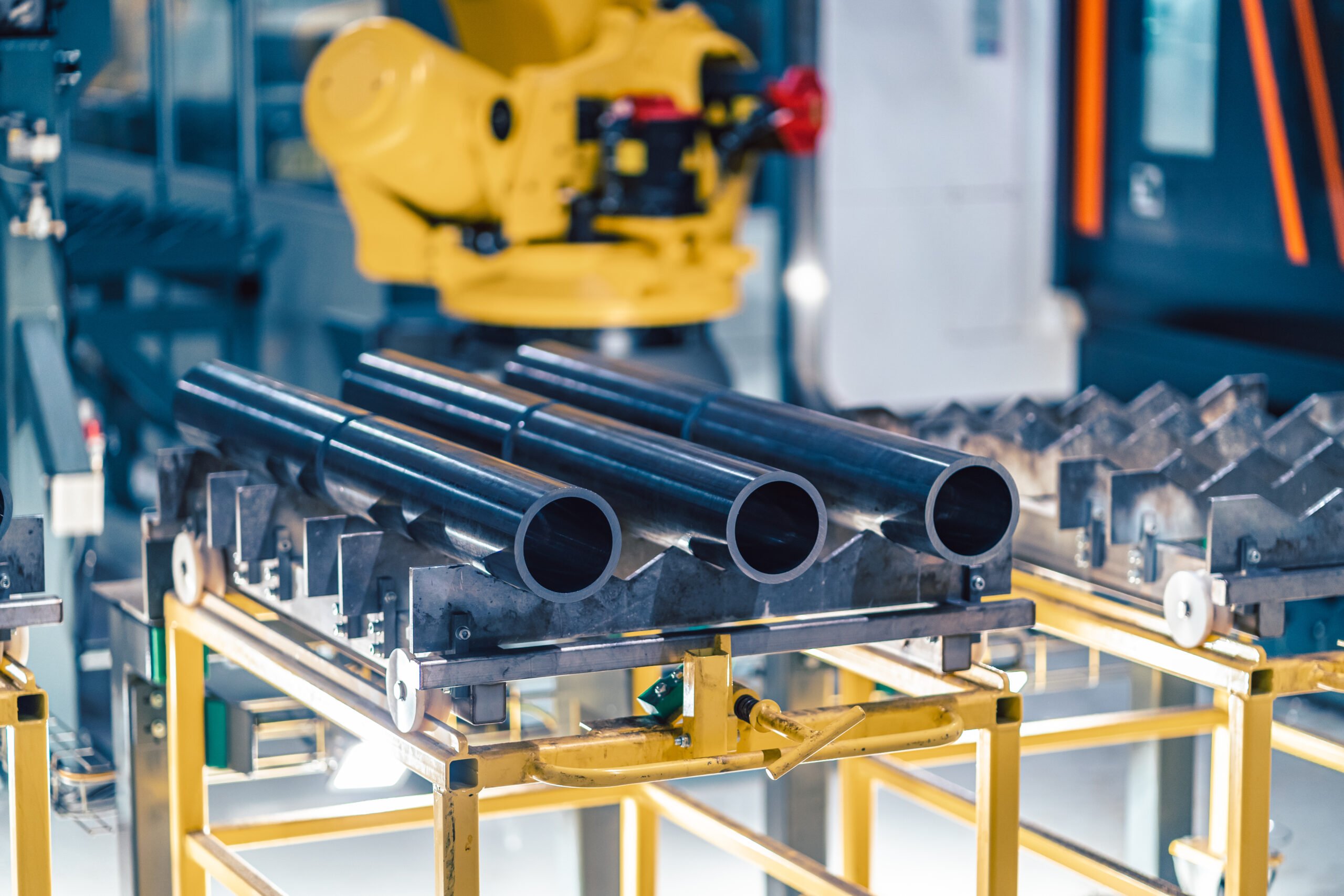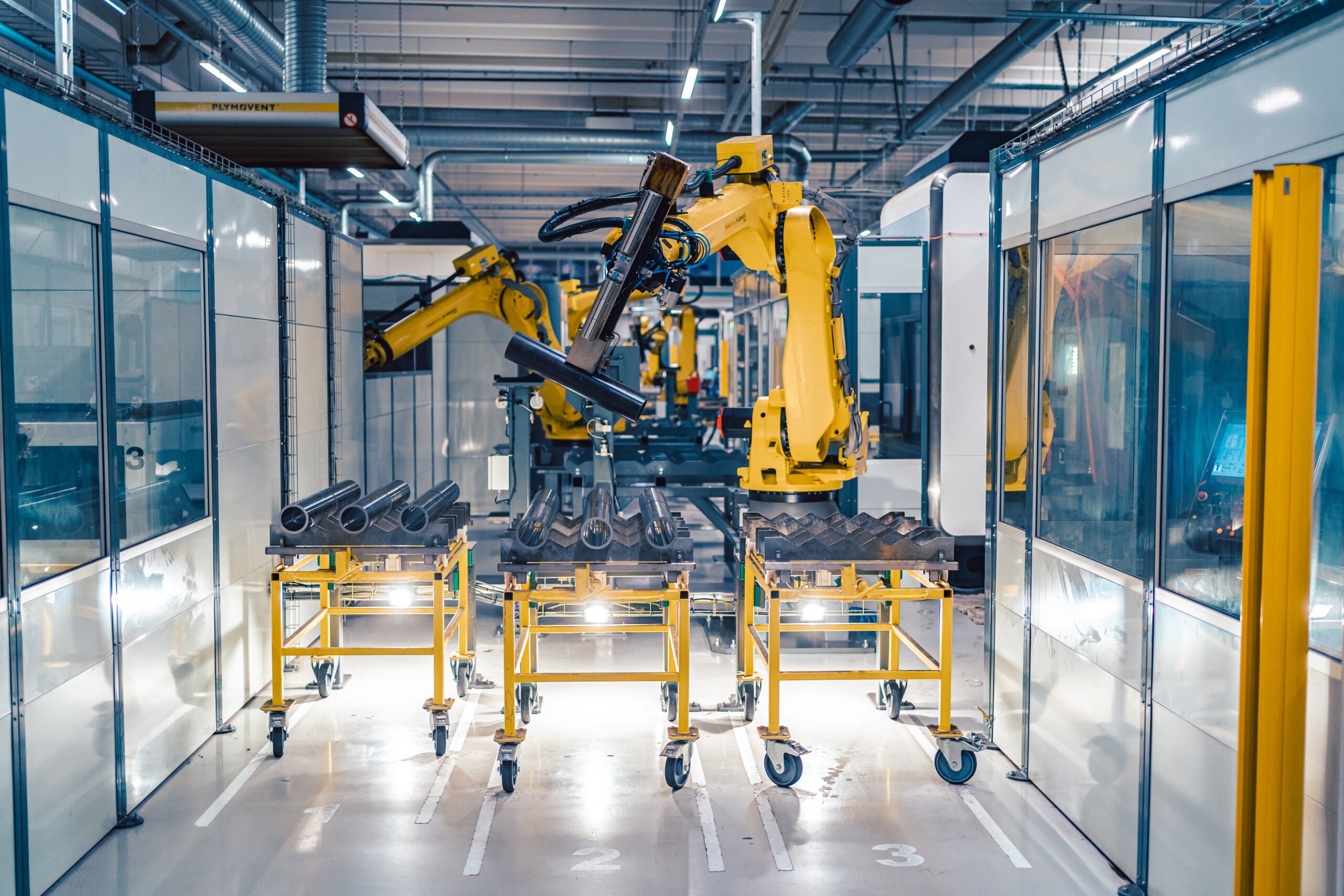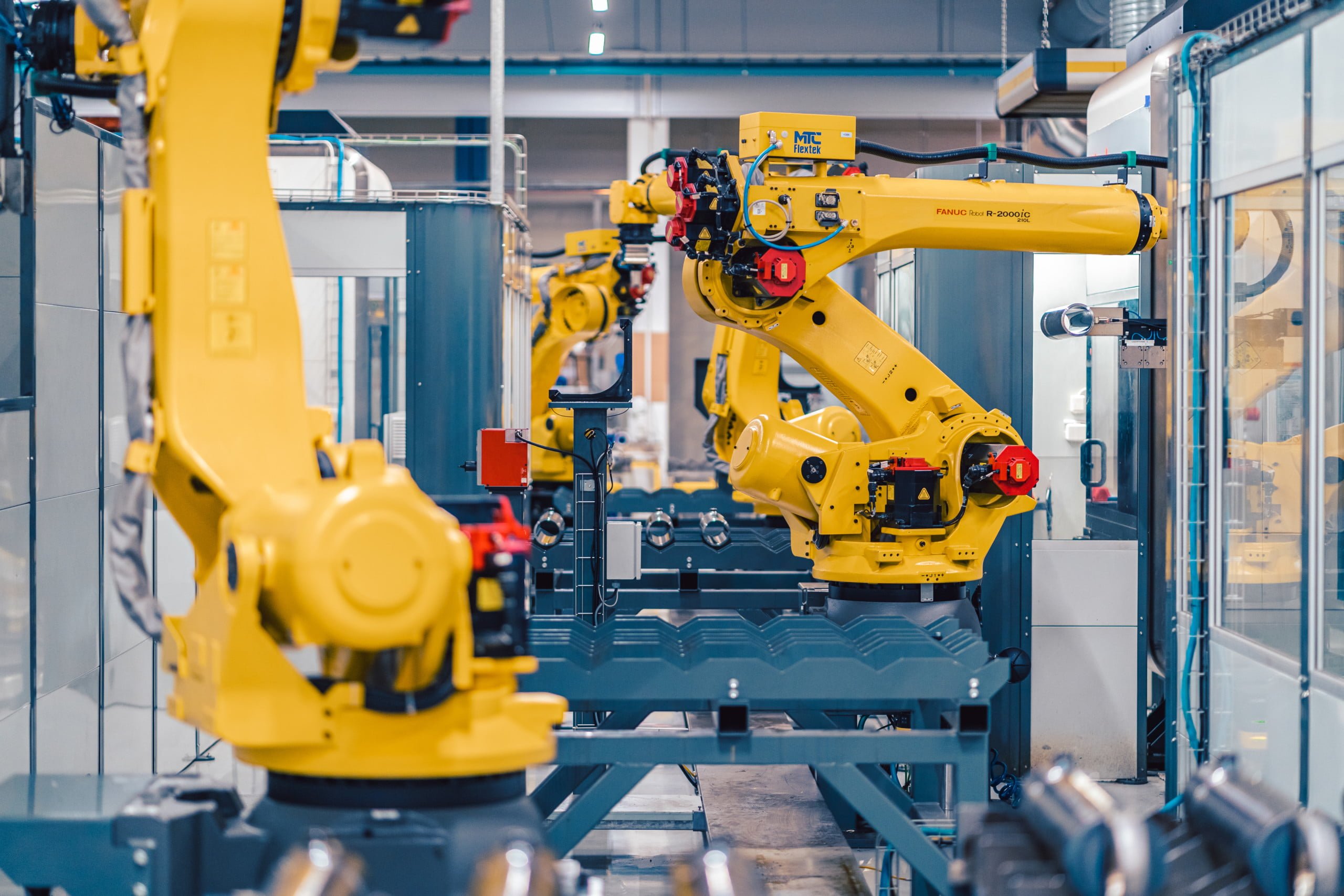How our automated production line works
Value Stream 1 (VS1), our automated production line, is one of Hydroline’s most valuable assets. VS1 was launched in September 2019. It is a testament to Hydroline’s commitment to staying at the forefront of the rapidly evolving manufacturing industry where automation is becoming increasingly prevalent. Now, let`s learn more about our automated production line and the process behind it.
The cylinders can range in length from 300 mm to 3000 mm and in diameter from 50 mm to 160 mm. Based on their measurements and the type of welding required, the technical department determines which cylinders are best suited for manufacturing on the automated line. Currently, 35% of Hydroline cylinders are manufactured on VS1.
Even though VS1 operates automatically, it still requires some human assistance. After the parts have been inspected, they are loaded onto the automated line. The appropriate program is then selected to continue the process. The programming is fully parametric and is determined by the dimensions of the tubes and rods. Finally, the robots move the pieces through the production line according to the instructions.
Process stages:
- First-stage turning
- First-stage welding
- Second-stage turning
- Second-stage welding
- Some cylinders are finished with regular welding if necessary
 |  |
At Hydroline, quality is one of our core values and an one of the most integral part of our operations. That is why quality control is a critical aspect of the operator’s responsibility. VS1 is equipped with cutting-edge technology and various instruments that ensure quality throughout the process phases. Operators are responsible for thoroughly inspecting the quality of the final product. This dual approach to quality control ensures that Hydroline consistently delivers high quality products to its customers.
Hydroline’s investment in automation has proven to be a strategic decision with multiple benefits. One of the significant benefits of VS1 is the increased production speed, which results in a significantly reduced lead time compared to manual production methods. The advanced software integrated into the automated system provides valuable production data such as production time and energy consumption. Furthermore, it ensures consistent quality. In a nutshell, our automated production line provides us several benefits varying from efficiency and quality to data collection.
 |
More from our blog
7 steps to hydraulic cleanliness
14.04.2021
Manufacturing hydraulic cylinders requires specific processes to prevent a cylinder from contributing failure to other system components. It is a common scenario that microscopic solid..
Read moreHydraulic cylinder’s initial data
19.07.2019
What is hydraulic cylinder initial data? When it comes to designing a hydraulic cylinder, the most important part is to provide the designer the information..
Read moreWhat is hydraulic cylinder used for?
12.06.2019
As we have told you before, hydraulic cylinder is one of the four main components of a hydraulic system. Hydraulic cylinders are used basically in..
Read moreWhat is a hydraulic cylinder?
05.06.2019
What are hydraulic cylinders? Hydraulic cylinders are everywhere around us, we see them in our daily life all the time without maybe even realizing if..
Read more

